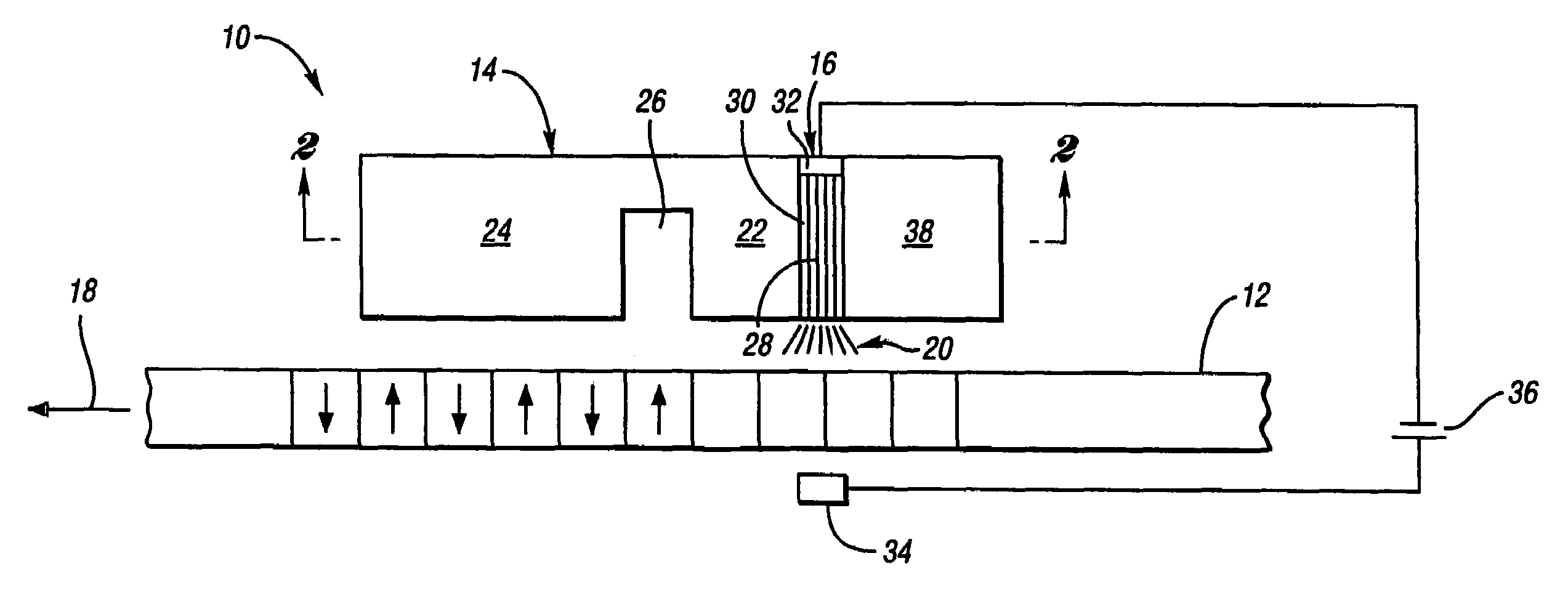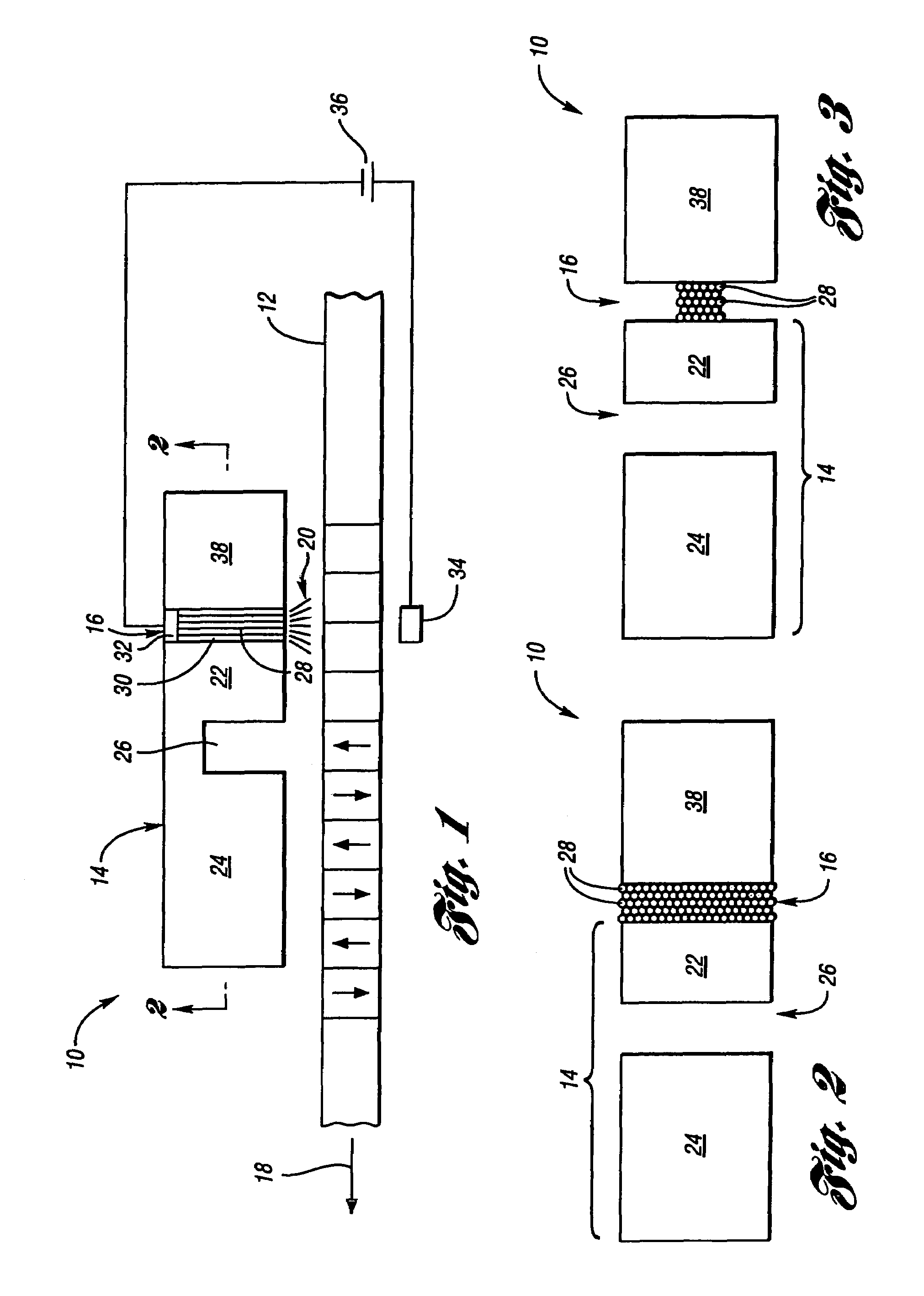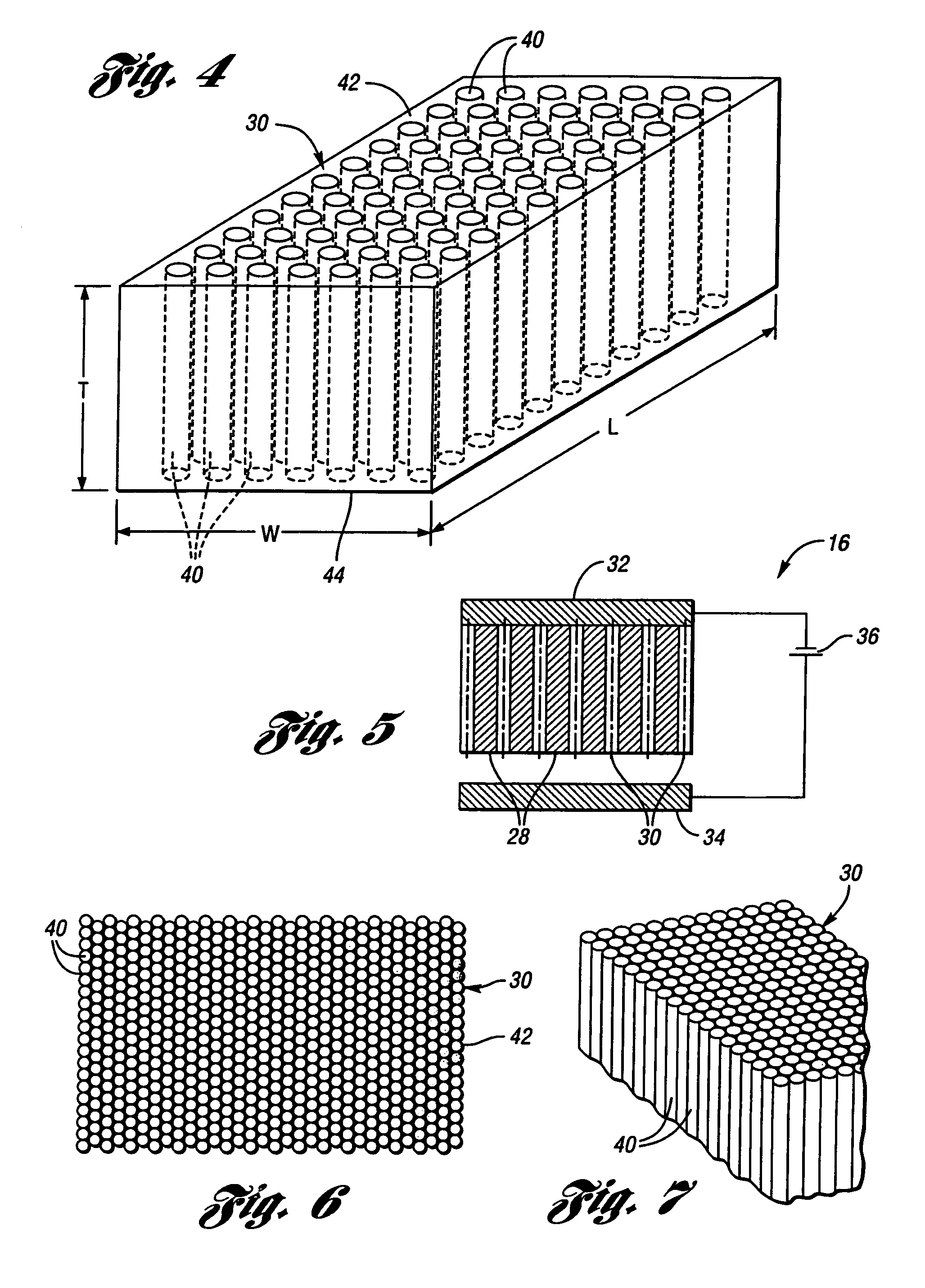Magnetic recorder having carbon nanotubes embedded in anodic alumina for emitting electron beams to perform heat-assisted magnetic recording
a carbon nanotube and electron beam technology, applied in the field of heat-assisted magnetic recorders, can solve the problems of not being able to maintain the domain, unreasonable to expect a further improvement in the magnetic recording field, and becoming increasingly difficult to meet the demands for the increase in recording density
- Summary
- Abstract
- Description
- Claims
- Application Information
AI Technical Summary
Problems solved by technology
Method used
Image
Examples
Embodiment Construction
)
[0030]Referring now to FIG. 1, a cross-sectional view of a heat-assisted magnetic recorder 10 (i.e., a thermally-assisted magnetic recorder 10) in accordance with an embodiment of the present invention is shown. Magnetic recorder 10 is used for magnetically recording information to a magnetic recording medium such as a magnetic disk 12. Magnetic recorder 10 generally includes a magnetic recording head 14 and an electron beam generator 16 (i.e., electron bean emitter 16). Recording head 14 and electron beam generator 16 function together to perform heat-assisted magnetic recording of information onto disk 12.
[0031]Magnetic recorder 10 is spaced relatively close to disk 12 (on the order of 100 nm or less) in order to magnetically record information onto the disk. Magnetic recorder 10 magnetically records information onto disk 12 as the disk moves relative to the magnetic recorder in the direction indicated by arrow 18. The relative movement between magnetic recorder 10 and disk 12 is...
PUM
| Property | Measurement | Unit |
|---|---|---|
| sizes | aaaaa | aaaaa |
| current | aaaaa | aaaaa |
| energy | aaaaa | aaaaa |
Abstract
Description
Claims
Application Information
 Login to View More
Login to View More - R&D
- Intellectual Property
- Life Sciences
- Materials
- Tech Scout
- Unparalleled Data Quality
- Higher Quality Content
- 60% Fewer Hallucinations
Browse by: Latest US Patents, China's latest patents, Technical Efficacy Thesaurus, Application Domain, Technology Topic, Popular Technical Reports.
© 2025 PatSnap. All rights reserved.Legal|Privacy policy|Modern Slavery Act Transparency Statement|Sitemap|About US| Contact US: help@patsnap.com



